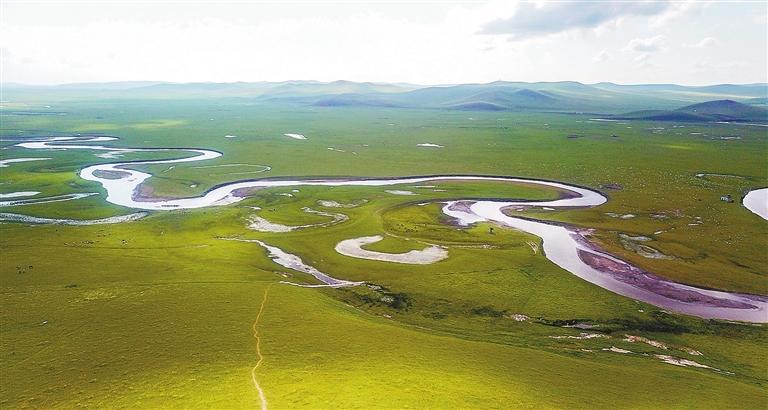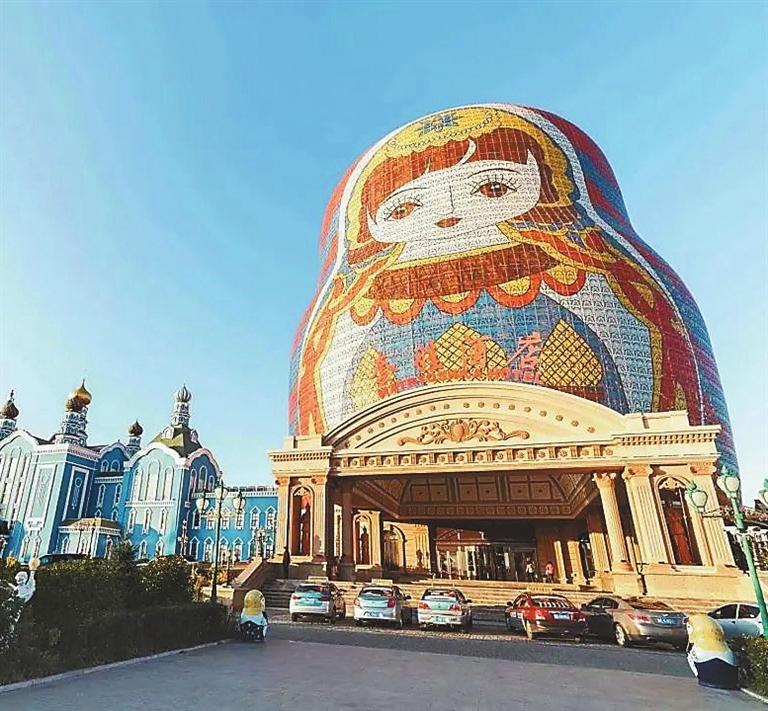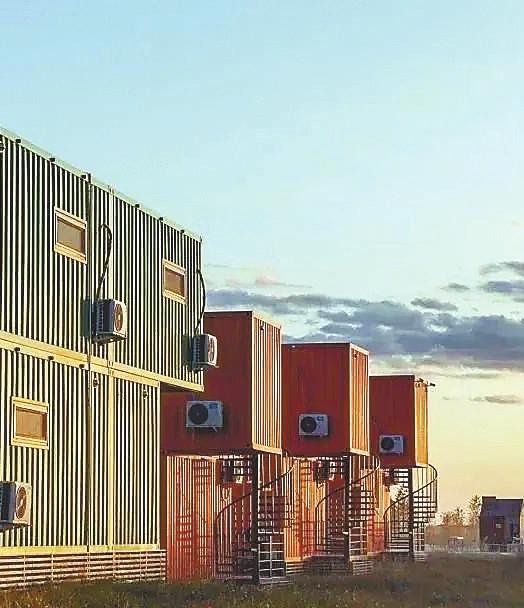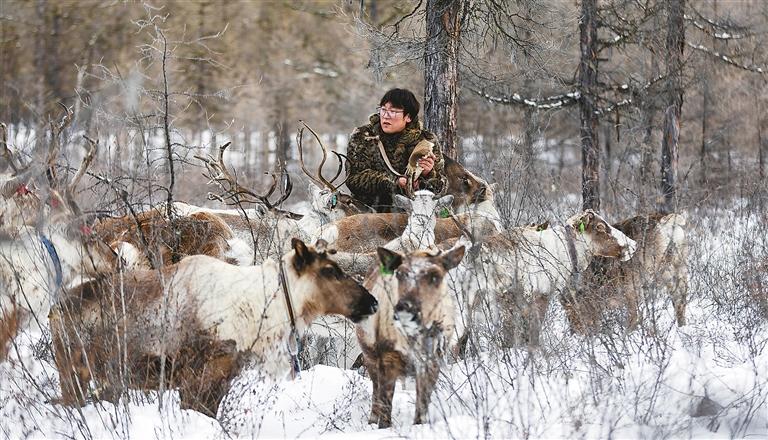



LOCATED in the northeast of Inner Mongolia, the Hulunbuir Prairie is a vast untouched prairie on the borders of China, Russia and Mongolia. The name Hulunbuir comes from two of the 500 lakes dotting the grassland, with “hulun” referring to “otter” and “buir” meaning “male otter” in the Mongolian language, alluding to the two lakes teeming with otters once upon a time. In addition to such awe-inspiring natural wonders as the wetlands, white birch forests, grasslands, lakes and rivers, travel in this area offers a peek into the life of the mysterious Ewenkis and an experience of towns infiltrated with Russian culture. Genhe The Ewenkis numbered about 70,000 in year 2000. A few thousand live in Mongolia, and the remainder are almost equally divided between Russia and China. They are either hunters and reindeer breeders or horse and cattle pastoralists and farmers. Genhe is a county-level city in Hulunbuir, named after the Root River that flows through it, which is a tributary of the Ergun River. The Ergun River flows 970 kilometers between Zabaykalsky Krai in Russia and Inner Mongolia. As “Ergun” means “offering” in Mongolian, the name implies this river nurtures the people inhabiting the vast land. The Ewenkis live in Aoluguya, Genhe. It’s known as the last reindeer village in China. Here, you can admire their unique Cuoluozi houses, a kind of cottage made up of poles and the bark of white birch or white stones, and interact with adorable reindeer, feed them, touch them and take photos with them up close. A visit to the Aoluguya Museum will help you understand the history and legend of this mysterious branch of the Ewenkis. The word “Ewenk” means “mountain people.” Legend has it that a long time ago, a hunter started the practice of breeding reindeer by raising six calves he captured. In the depths of Genhe Wetland Park, Bu Dongxia and her husband raise a herd of a little more than 80 reindeer and live in the traditional way. “The reindeer primarily feed on mosses and a variety of mushrooms, and they drink spring water,” Bu said, adding that they need an untainted environment to survive. To supply them the sodium needed, the Ewenkis mix salt with soybean residues as snacks for the reindeer. The Ewenkis hunt, but don’t kill reindeer, an animal they deem sacred. When a reindeer dies, they will hold a sacrificing ceremony before cutting meat off its carcass for food. Lacking a written language, the Ewenkis paint on animal hides as a kind of record of their history. In the Aoluguya Museum, visitors can find such paintings, made completely with natural materials on processed animal hides. Manzhouli Most people visit this region to take in the endless steppes and large lakes. But amid these stunning landscapes, they can also find a quasi-Russian fantasy. In Manzhouli, a city near the Sino-Russian border, one of the main attractions is Matryoshka Square. Hundreds of large Russian nesting dolls decorate this square. In one section, dolls painted with the faces of Vladimir Lenin and Nelson Mandela are situated side by side. The largest red and yellow matryoshka doll at the center of the square measures 72 meters tall, and is actually a hotel open for business. For those with matryoshka fever, lines of shops selling standard-sized matryoshka dolls, keychains, and other souvenirs are at their disposal. The square also has other whimsical buildings painted in bright colors that resemble iconic Russian landmarks such as St. Basil’s Cathedral in Moscow. Once inside the matryoshka-themed hotel, the guest will find themselves surrounded by nesting dolls, on the room doors, on the wall above the bed, on teapots, and even on the shampoo containers in the shower. Manzhouli is also a city with a history. The city’s museum, located in a Russian-style building dating back to 1928, had previously been used as the city council building, a hospital, a school and military headquarters. It has a collection of many mundane objects such as a bronze bell and a road sign inscribed with Russian letters. The Manzhouli Grand Hotel is also worth a visit. First built in 1904 by Russians and renovated in 2006, it features a Gothic architectural style. The photos on the wall and Russian-style tea sets in the lobby tell stories of the venue’s glorious past when it was frequented by the wealthy and powerful. A visit to Manzhouli is not complete until one has tried an authentic meal in a Russian-style restaurant, and the Lubuli Restaurant on Xisandao Street is on top of the list recommended by locals. A must-try dish is a beef stew freshly cooked and served in a pot, with ingredients of beef, potato, carrots, celery and beets. Folk song and dance performances are provided at the restaurant in the evening. The Morigele River Famous for its stunning serpentine course, the Morigele River lies in the middle of the Hulunbuir Prairie. Its headwater is in the western slope of Northeast China’s Greater Xing’an Range. With numerous bends and a total length of 319 kilometers down to the southwest, the river basin reaches nearly 5,000 square kilometers. The Morigele River offers spectacular views, while natural pastures on both banks nourish the herdsmen’s livestock. About 100 kilometers away is the Ergun Wetland Scenic Area located in the downtown area of Ergun City, which borders Genhe City. The Root River runs through the flat meadow like a silver belt. On both banks of the river are lush forests with trees and bushes in vibrant green, yellow, red and brown. The Heishantou Ruins Heishantou is a picturesque town by the Ergun River, some 60 kilometers southwest of the city seat of Ergun. The ruins site is said to be the fief of Hazar some 700 years ago. Hazar was the brother of Genghis Khan, who was said to have held ceremonies here before setting out to battlefields. The ancient city is reduced to mounds today. Many also visit the town to enjoy a majestic sunset on the nearby hills, which is said to be the best in this region. Lake Buir The lake, part in Xinbarhuyouqi, west of the Hulunbuir Prairie, has its larger part in Mongolia. The Container Hotel by the lakeside is a nice place to stay overnight, where one can take in through the French windows of its guestrooms the serene beauty of the vast lake. (Li Dan) | 
